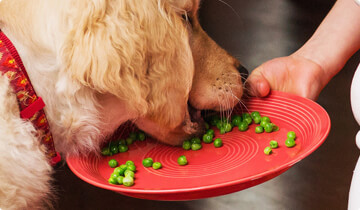Do you know when your pet has eaten something they shouldn't have?
Despite our best efforts, sometimes dogs eat things they shouldn’t. If you’ve got a pooch that loves to chew, swallow or nibble on things, you’ll need to know what steps to take if they’ve ingested something bad for them.
What distress signals should you look out for?
The first thing to say is that if you know for sure your dog has eaten something dangerous, or is having trouble breathing, stop reading now and immediately call your vet.
If you are not sure; they’ve just come slinking home and they’re not their usual happy selves, their behaviour will give you some clues as to what they’ve been up to.
Our little furry friends, and especially puppies, explore the world with their noses and mouths. If something smells, they’ll lick it. If it has a taste, they will chew it. They don’t know if it is toxic or a health hazard until it is too late.
If they have eaten something they shouldn’t, they will become distressed and give you signs.
Upset tummies
The first clear signs that pooch has eaten something that has not agreed with them are:
- Vomiting
- Diarrhoea
- Drooling
- Appetite Loss
- Lethargy
- Unsettled
Cries for help
These are all sign of your pet telling you they are in pain:
- Whimpering
- Whining
- Crying or moaning
- Unable to settle
- Asking to repeatedly be let outside
- Sitting or sleeping in unusual places
- They may appear hunched or will keep stretching
Some dogs will try retching but are unable to throw up. If you see any unusual change in the behaviour by your dog, it’s worth getting checked by your vet.
Choking hazards
It could be anything - bones, rawhide chews, balloons, food wrap, socks, string. If an object is obstructing their airway, they will need immediate help. Indications are:
- Pawing at the mouth
- Retching
- Gagging or choking
- Distressed behaviour
- Struggling to whine
Poisons
There are a lot of common products we have in our cupboards that are poisonous to our pets. Things like drain or oven cleaner, dishwasher tablets, bleach or floor polish, even chocolate or fruit stones. Signs range from mild to severe.
- Vomiting
- Diarrhoea
- Drooling
- Lethargy
- Agitation
- Tremors
Sharp objects
A scary scenario is when your dog eats something sharp or that has splintered. These can cause damage to their gut lining, and lead to painful and life-threatening infections. The signs are:
- Abdominal bloating
- Vomiting
- Refusing to eat
- Diarrhoea
- Fever
- Lethargy
Blockages
Small toys, socks, stones, corn cobs and tennis balls are all culprits. Tell-tale signs are:
- Vomiting
- Inability to defecate
- Reduced or absent appetite (only if stuck in the oral cavity)
- Drooling
- Gagging
- Lethargy
What can you do to help?
The best thing you can do for your dog is to get immediate help from a vet. If you know what and when they swallowed, it will help the vet decide what needs to be done to help and comfort your pet.
If you don’t know what they have eaten but they have vomited, and there is something unusual in the vomit, collect a sample for the vet to look at.
Hopefully, you never have to experience any of that, our little fur buddies mean so much to us.
Tips:
Prevention is the best way to stop your pet from eating something they shouldn’t.
- Keep any foods toxic to pets well out of reach of curious paws and noses. Be wary around busy holidays like Easter or Christmas, when toxic foods like raisins or chocolate are more likely to be around.
- Securely store hazardous chemicals like chemical cleaners, rat bait, slug bait and weed killers. Keep your pet away from any areas where you’ve recently used these.
- Keep your furry family member’s romping ground clean and clear of small items that they might be tempted to chew on (like plastic toys with small parts). Keep your pet out of messy kids’ bedrooms and other rooms that are hard to keep tidy and pet-safe.
Though our fur fam will always be curious, exploring the world with their sense of taste and smell, these easy steps will help you avoid a trip to the vet.
References
https://www.petmd.com/dog/emergency/common-emergencies/e_dg_swallowed_objects
https://www.petmd.com/dog/emergency/poisoning-toxicity/e_dg_swallowed_poisons
https://www.akcpetinsurance.com/blog/top-7-signs-your-dog-is-sick-from-something-they-ate-in-the-yard
https://www.petmd.com/dog/conditions/digestive/c_multi_peritonitis



